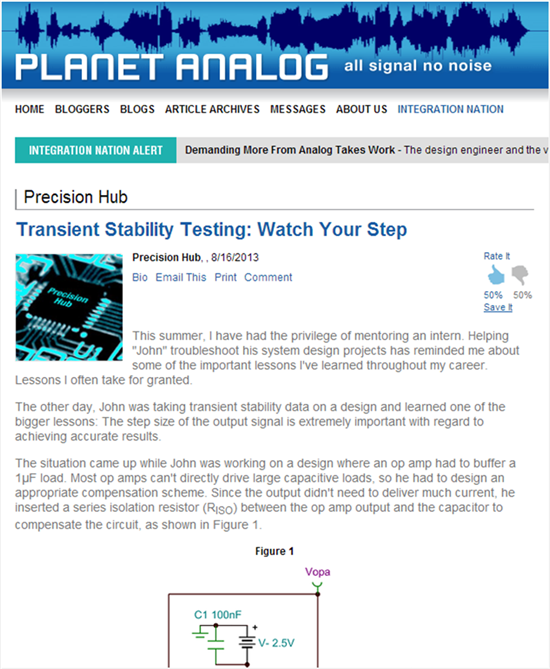Our monthly post on our sister blog, the “Precision Hub” on Planet Analog, focuses on transient stability testing.
In it, I share a recent experience I had with one of our summer interns. He was taking transient stability data on a design and learned an important lesson – the step size of the output signal is extremely important to achieve accurate results.
Read my full post, "Transient stability testing: Watch your step," on Planet Analog to learn how I helped him identify the issue and correct it.

